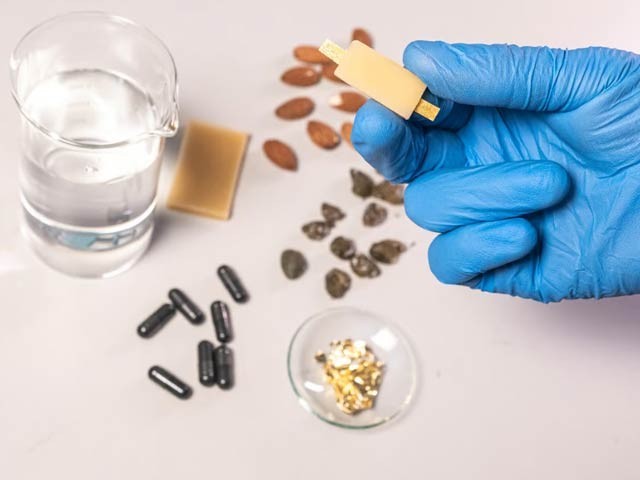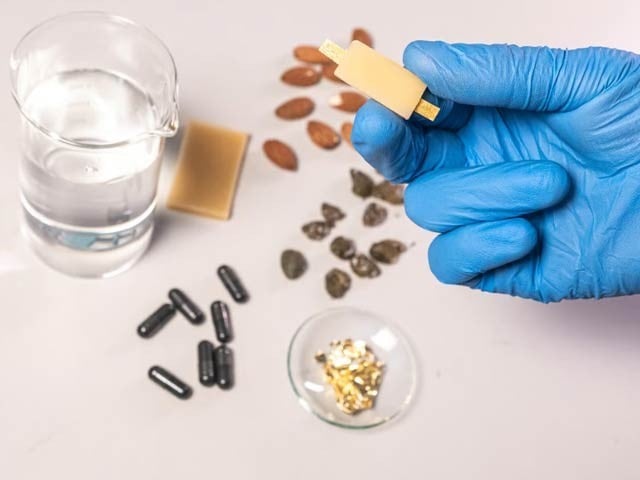
The hand-held battery is prominent while the back side shows its core components. Photo: IIT
Rome, Italy: Italian scientists have created a prototype of a battery that can be eaten.
Dr. Mario Caroni of the Italian Institute of Technology (IIT) has developed a battery that works on the biochemical reaction (redox reaction) going on in the human body and cells.
The anode of this battery consists of vitamin B2 or riboflavin while the cathode is made of quercetin. Both of these components are found in many fruits and plants. It is then mixed with charcoal to improve electrical conductivity.
Its electrolyte consists of water and the separator acts as a permeable membrane between the anode and the cathode. But burekare actually consists of seaweed that is used in the sushi dish. After this, beeswax is deposited on the thin gold foil.
The experimental battery is designed at 0.65 volts and when charged, it discharged 48 microamperes for 12 minutes. Although this is not a lot of energy, small sensors and LEDs etc. can be powered by it.
According to Dr. Mario, edible circuits and batteries can be used to monitor health and food warehouses and thus reduce environmental damage. Thus these batteries provide better human-friendliness and protection. Besides, they can be widely used in children’s toys. Children often swallow small batteries and buttons in toys, which can be fatal many times.
(function(d, s, id){
var js, fjs = d.getElementsByTagName(s)[0];
if (d.getElementById(id)) {return;}
js = d.createElement(s); js.id = id;
js.src = “//connect.facebook.net/en_US/sdk.js#xfbml=1&version=v2.3&appId=770767426360150”;
fjs.parentNode.insertBefore(js, fjs);
}(document, ‘script’, ‘facebook-jssdk’));
(function(d, s, id) {
var js, fjs = d.getElementsByTagName(s)[0];
if (d.getElementById(id)) return;
js = d.createElement(s); js.id = id;
js.src = “//connect.facebook.net/en_GB/sdk.js#xfbml=1&version=v2.7”;
fjs.parentNode.insertBefore(js, fjs);
}(document, ‘script’, ‘facebook-jssdk’));



